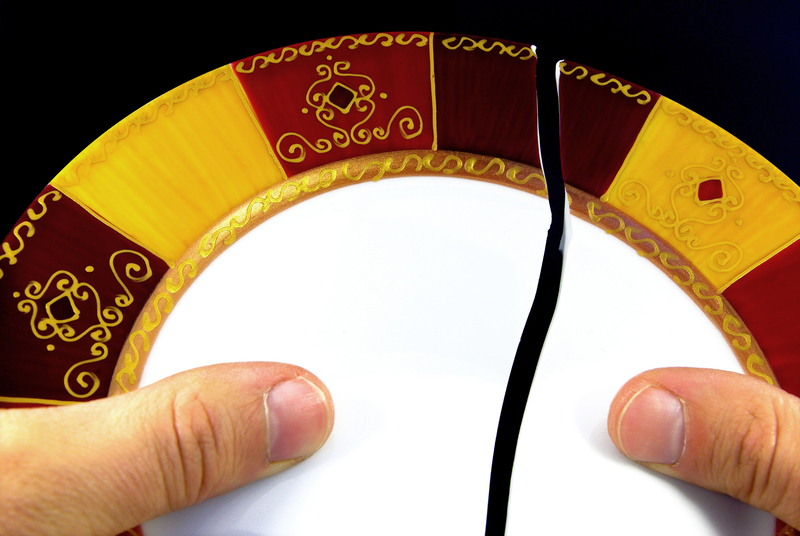The hidden costs of DIY piano moving and alternatives
Posted on 22/06/2025
The Hidden Costs of DIY Piano Moving and Alternatives
Moving a piano is far from an ordinary household task. These delicate yet massive instruments pose unique challenges that can lead to unexpected expenses and damages if not handled properly. Many homeowners entertain the idea of saving money by moving their piano themselves. But is DIY relocation truly cost-effective? In this comprehensive article, we'll dive into the hidden costs of DIY piano moving and explore safer, cost-efficient alternatives that protect your priceless instrument.

Understanding the Value and Vulnerability of Your Piano
Pianos are intricate pieces of craftsmanship. Whether it's an upright, grand, or digital piano, these instruments contain thousands of moving parts, many of which are highly sensitive to force and environmental changes. While their robust exterior may exude durability, pianos are surprisingly fragile. Damage to even a single internal component can affect the tone, playability, and overall value of the instrument.
- Average upright pianos weigh 300-500 lbs.
- Baby grand pianos can tip the scales at 500-800 lbs.
- Concert grand pianos may exceed 1,200 lbs.
Because of their weight and size, moving a piano is not just about brute strength but also skill, specialized equipment, and careful planning. Ignoring these requirements can quickly transform a do-it-yourself project into a costly mistake.
The Hidden Costs of DIY Piano Moving
1. Equipment Rental and Supplies
To successfully move a piano, you'll need more than just manpower. Essential equipment includes:
- Piano dollies and skids (average rental: $30-$60 per day)
- Moving pads or blankets to protect the finish
- Heavy-duty lifting straps
- Packing tape and stretch wrap
- Wooden planks or ramps
These essentials can quickly add up. Even if you manage to borrow some items, the cost for proper protective gear (moving gloves, shoe covers, etc.) will also strain your budget.
2. Hidden Labor Costs
Although friends and family might volunteer to help, the physical toll of moving a piano should not be underestimated. Pianos often need to be maneuvered around tight corners, up stairs, or over uneven surfaces. Potential labor-related costs include:
- Lost wages or personal time
- Extra snacks or refreshments for helpers
- Pain or injuries resulting in medical expenses
It's important to note: Medical costs from back strains, hernias, or accidents can easily surpass the price of hiring professional movers.
3. Risk of Damage to the Piano
Pianos are susceptible to a multitude of threats during a move:
- Scratches, dents, or cracks to the wood finish
- Broken legs, pedals, or internal mechanisms
- Misalignment or damage to the keys and strings
Repairing these damages is often prohibitively expensive. Tuning after a move is a must, but dropping or bangling the piano may call for costly repairs--sometimes totaling in the hundreds or thousands of dollars.
4. Liability for Home and Property Damage
A minor miscalculation can result in:
- Gouged wood flooring or ripped carpets
- Scratched walls and door frames
- Damaged staircases or handrails
Homeowners insurance seldom covers such self-inflicted accidents. Repairing damage to your property may cost much more than anticipated and can even impact the resale value of your home.
5. Cost of Transportation
Pianos often won't fit in a standard vehicle. This means:
- Renting a moving truck with a ramp or lift gate (often $100+ per day)
- Fuel surcharges, mileage, and possible late fees
Improper securing can lead to shifting during transit, putting your instrument at further risk. In severe cases, it could result in a totaled piano.
6. Insurance Coverage Gaps
If your piano is damaged or lost during a DIY move, your homeowner's or renter's insurance may not offer coverage. Standard policies usually exclude mishaps that occur through personal negligence.
Comparing the Hidden Expenses: DIY vs. Professional Piano Movers
| Expense Type | DIY Piano Moving | Professional Piano Movers |
|---|---|---|
| Equipment Rental | $100-$200 | Included in service |
| Labor Costs | Personal time or injury risk | Skilled team included |
| Damage to Piano | $200-$2,000 (repairs) | Insurance and expertise minimize risk |
| Property Damage | $300+ (repairs) | Insured movers take responsibility |
| Transportation | $100-$500 | Specialized vehicles included |
| Insurance | Not assured | Full or partial coverage |
| Peace of Mind | Stressful, high risk | Secure, professional process |
Alternatives to DIY Piano Moving
1. Professional Piano Moving Companies
The safest alternative to DIY relocation is hiring a reputable professional piano moving company. These specialists offer:
- Experienced movers trained specifically for piano relocation
- Proper equipment, including skid boards, dollies, and ramps
- Custom crating, wrapping, and temperature-controlled moving trucks
- Insurance to protect both your instrument and your home
The cost for professional piano moving typically ranges from $200 to $600 depending on distance, type of piano, and logistical challenges (like stairs or narrow hallways). Though it may seem like a larger upfront cost, it actually saves money long-term by avoiding potential damages and personal injuries.
2. Hybrid Moving Services
Hybrid moving services allow you to split responsibilities and costs. For example, you may handle the bulk of your household move personally but hire a specialist for the piano alone. This approach grants you:
- Cost savings compared to comprehensive moving packages
- Expertise and care specifically for your valuable instrument
This method is especially useful when your new residence is within close proximity or when budget constraints are paramount, but the piano's safety cannot be compromised.
3. Piano Storage and Shipping Solutions
If your move requires temporary storage--such as during a home remodel or relocation to a different state--look for specialized piano storage facilities and shipping companies. These businesses offer:
- Climate-controlled environments
- State-of-the-art security
- White-glove pickup and delivery
While slightly more expensive than standard storage solutions, these options offer peace of mind and keep your delicate instrument in prime condition.
4. Consult With Piano Technicians
Before moving, it's wise to speak with a piano technician or tuner. They can:
- Advise on preparation and transportation
- Help schedule post-move tuning and servicing
Some technicians may even have partnerships with trusted movers and can recommend the best in your area.
How to Choose a Professional Piano Moving Company
If you decide to skip the DIY piano moving risk and hire professionals, take these steps to find a reputable company:
- Check for licensing and insurance
- Request references or read online reviews
- Ask about equipment and methods
- Inquire about experience with your specific piano type
A trustworthy moving company will offer a clear estimate, explain their process, and provide documentation for insurance coverage.
Frequently Asked Questions About Piano Moving Costs
1. Why Do Piano Moving Costs Vary?
Prices depend on piano type (upright, baby grand, grand), weight, distance traveled, accessibility of the origin and destination, and additional services like storage or crating.
2. How Much Does It Cost to Repair a Damaged Piano?
Minor cosmetic repairs may cost under $150. However, significant damage--such as broken strings, cracked soundboards, or frame misalignments--can easily cost several hundred or even thousands of dollars.
3. Is It Ever Safe to Move a Piano Yourself?
For small, lightweight digital pianos, a careful DIY move might be feasible. For acoustic pianos, especially grands and uprights, the risks usually outweigh the cost savings. Professionals are always the safer bet.

Conclusion: The True Price of DIY Piano Moving
What appears as a budget-friendly solution often leads to significant hidden costs. The challenges of moving a piano yourself include:
- Purchasing or renting special equipment
- Physical strain and risk of injury
- Potential piano or property damage leading to expensive repairs
- Lack of insurance coverage
- Unexpected transportation costs
The cumulative effect rarely equals the peace of mind and warranted protection provided by experts. When you factor in these hidden costs of DIY piano moving, opting for professional movers or hybrid solutions emerges as the most sensible-- and ultimately most affordable--path. Protect your beloved instrument and your home by investing wisely and trusting the experts.
Ready to Move Your Piano? Choose Wisely!
If you want your piano to sound its best for years to come, avoid the pitfalls of a DIY move. Research local or national piano moving specialists, ask the right questions, and prioritize your instrument's safety. Your savings--and your piano--will thank you.



